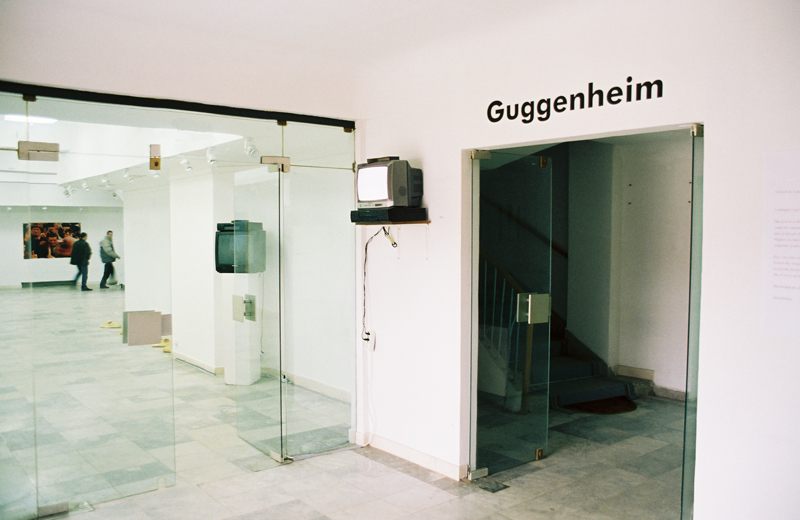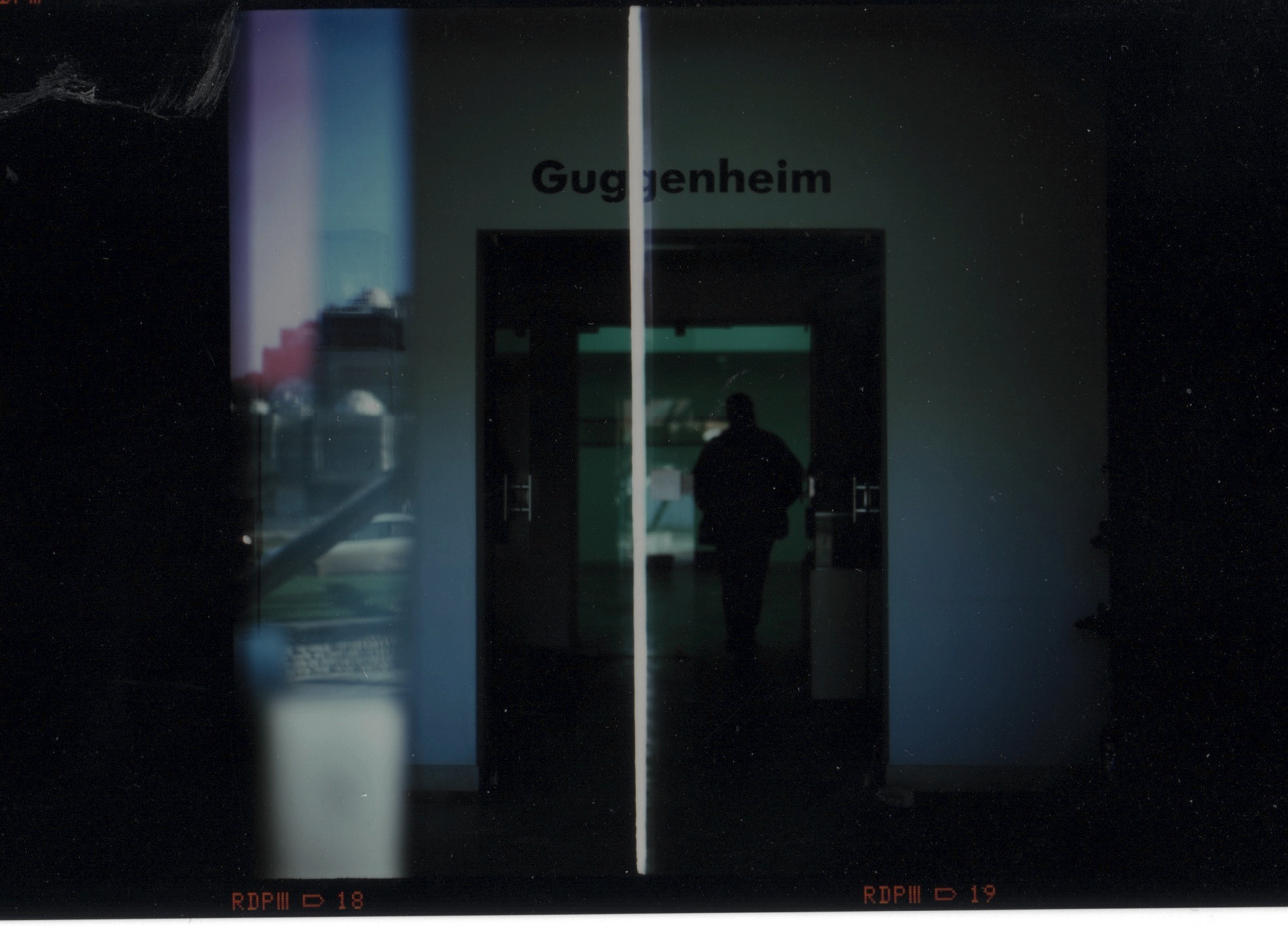Guggenheim, 2003, Mrs. Brainwash Galeria e Arteve e Kosovës, Prishtinë
Installing the name Guggenheim on the front entrance of the exhibition space of the G.A.K. The work “Guggenheim” generates several questions about space and time and their relations. As first this work opens the question of location. What happened through this minimal intervention? Inside the Galeria e Aarteve the Kosoves was situated a “Guggenheim”. One institution was inside the other, a museum placed inside a gallery. For the visitor, this opens the question where he is and what he is looking at? Is he watching an exhibition of the gallery or a collection of the museum – or both at the same time? Sometimes two identical artworks can be exhibited in two different spaces (galleries, museums). But in this situation something for us irrational, but real happens. One work (one exhibition) is exhibited in two institutions. During the exhibition, these two institutions not only exist, they also coexist. They were in charge as an exhibition space, at the same time in the same space for the same exhibition. Where were the works exhibited – in the gallery or the museum? Does the artwork change the meaning, if it’s exhibited in the museum or in the gallery? Or was the museum exhibited in the gallery? Was the space exhibited in the other space? The next question is the relation of the work “Guggenheim” to the works exhibited inside. Through this act, all works inside acquired a whole new meaning. So the work Guggenheim builds the relation to each work inside or is a part of another layer of exhibited works. The work “Guggenheim” opens a special question in relation to itself. What is this work, what is its function? Is this “work” placed inside of these two institutions or is this work placed inside itself? What kind of space and time relation has the work to itself? Is the exhibited work something that we still don’t have the name for?
Guggenheim (2003) Mrs. Brainwash Galeria e Arteve e Kosovës, Prishtinë

